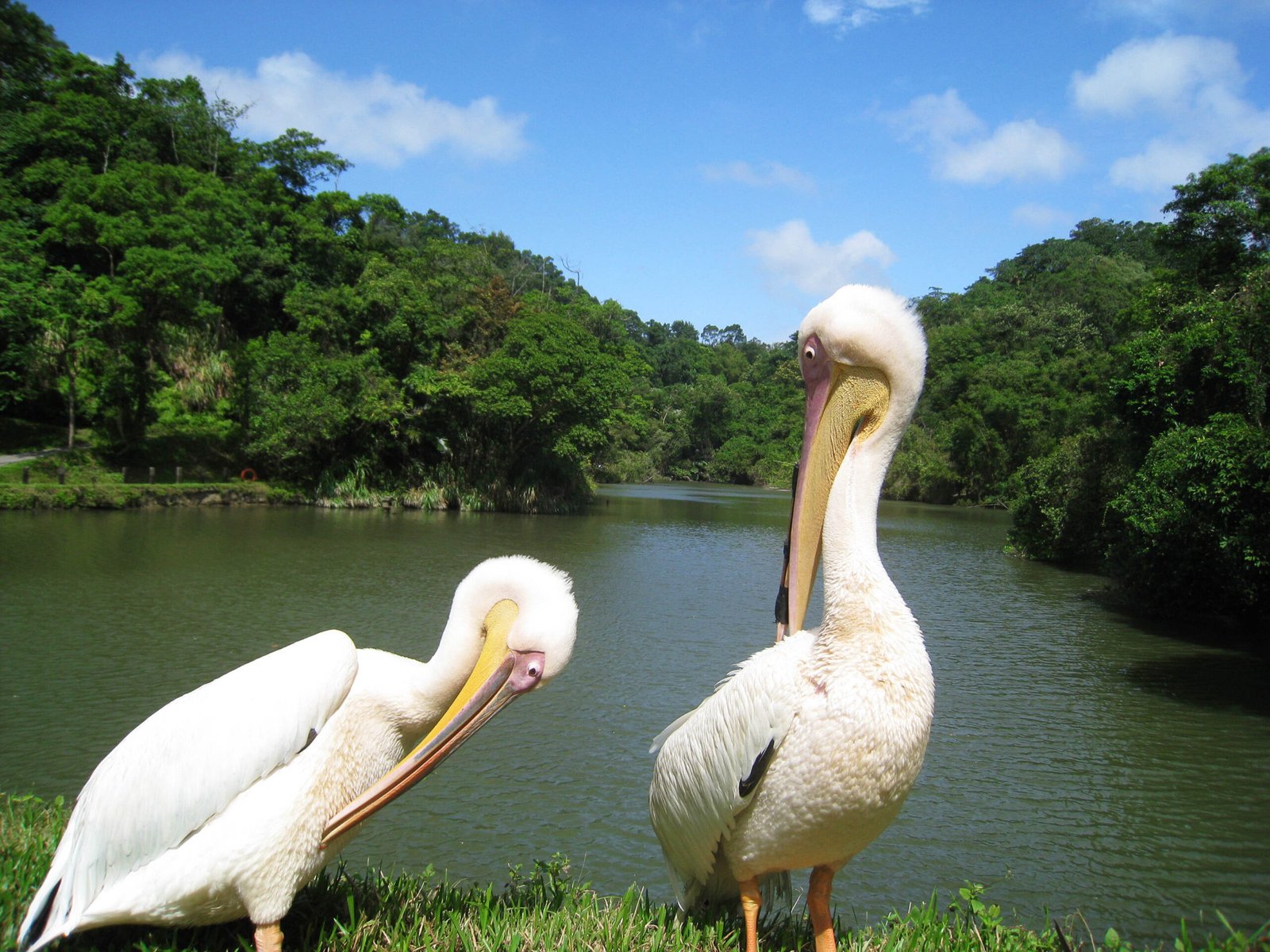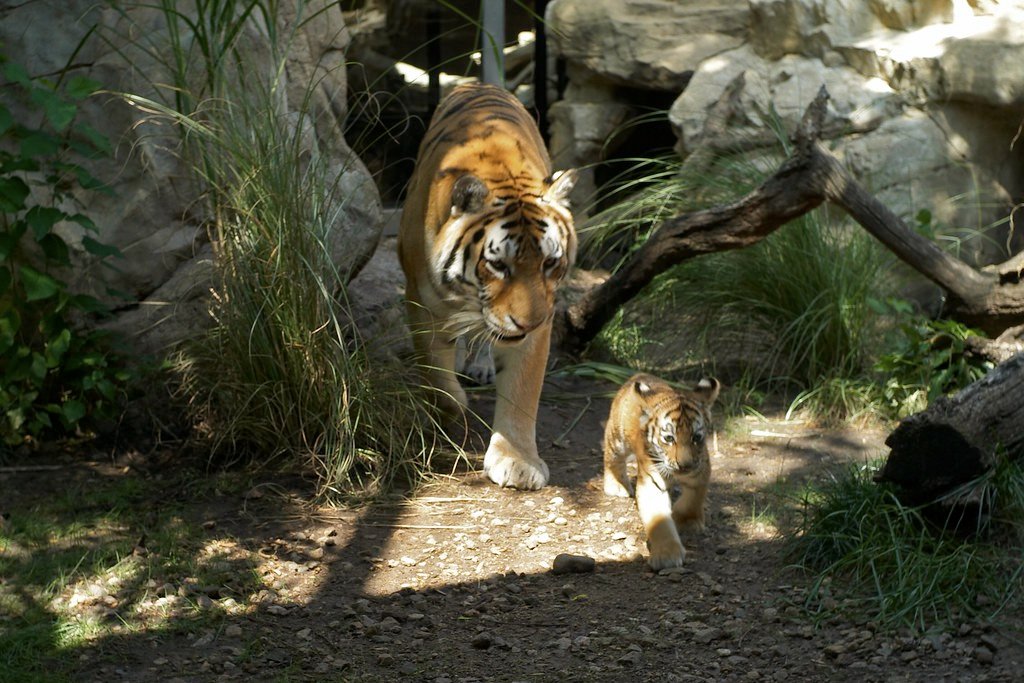Imagine walking through a zoo where the only footprints left are those of the animals themselves. Picture vibrant habitats powered by the sun, lush gardens fed by recycled rainwater, and every corner whispering a promise to the planet. Around the world, zoos are beginning to rewrite their stories—not just as sanctuaries for wildlife, but as champions in the fight against climate change. These pioneering zoos are proving that caring for animals means caring for the Earth itself, inspiring hope and awe in visitors of all ages. Let’s explore the remarkable journeys of ten zoos boldly turning green, showing us that conservation can start from within.
San Diego Zoo: Solar-Powered Conservation
The San Diego Zoo has become a global icon not just for its animal care, but also for its innovative steps towards sustainability. The zoo’s sprawling grounds now sparkle with solar panels, quietly soaking up the California sun and powering everything from the gift shop to wildlife habitats. Beyond renewable energy, San Diego Zoo has introduced water recycling systems and composting programs that transform waste into rich soil for their botanical gardens. The zoo’s dedication extends to electric vehicle fleets and reducing single-use plastics wherever possible. These changes aren’t just good for the environment—they also offer visitors a real-life lesson in how technology and nature can harmonize. The zoo’s leadership frequently speaks about their vision to become entirely carbon neutral in the coming years, setting a high bar for the industry. San Diego Zoo’s transformation is a living example that even the largest institutions can make a significant impact when they decide to go green.
Singapore Zoo: Jungle in the City, Powered by Nature
Nestled in the heart of a bustling city, Singapore Zoo has emerged as a leader in eco-friendly innovation. Surrounded by lush rainforest, the zoo harnesses rainwater to irrigate its landscapes and cool down animal enclosures naturally. Their “Zero Waste” campaign encourages visitors and staff to recycle, compost, and cut down on single-use materials. Solar panels power much of the zoo’s infrastructure, while electric trams glide silently through the park, reducing emissions and offering a peaceful ride through nature. The zoo’s wildlife hospital runs on renewable energy and uses eco-friendly cleaning agents to protect both animals and the environment. Educational displays throughout the park inspire guests to make greener choices at home. Singapore Zoo’s efforts show that even in densely populated areas, it’s possible to create a thriving, sustainable oasis.
Woodland Park Zoo: Urban Sustainability Pioneer

Woodland Park Zoo in Seattle stands at the forefront of urban eco-friendly innovation. The zoo’s Green Zoo Standards have led to the installation of green roofs that support native pollinators and help regulate temperature. Water conservation is a top priority, with advanced systems capturing and reusing rainwater for animal habitats and irrigation. The zoo also runs a successful composting program, turning food scraps and animal waste into nutrient-rich compost for local gardens. Woodland Park Zoo’s energy-efficient buildings are constructed with recycled materials, and LED lighting illuminates pathways with minimal energy use. Public transportation incentives encourage guests to leave their cars at home, further reducing the zoo’s carbon footprint. Every step of the way, the zoo invites visitors to see sustainability in action and be part of the solution.
Melbourne Zoo: Australia’s Eco-Warrior
Melbourne Zoo has declared an ambitious goal: to become the world’s first certified carbon-neutral zoo. Their journey is marked by bold initiatives, such as investing in wind and solar energy to cover the majority of their power needs. Melbourne Zoo has implemented strict waste reduction strategies, including banning all single-use plastics and introducing recycling stations throughout the park. Their animal enclosures are designed with natural cooling and heating techniques, reducing the need for artificial climate control. The zoo’s “Choose Tap” campaign promotes reusable water bottles and highlights the impact of plastic pollution on marine life. Staff and volunteers are trained to champion eco-friendly practices, fostering a culture of environmental stewardship. Melbourne Zoo’s commitment has sparked similar movements in other Australian institutions, creating a ripple effect of sustainability.
Toronto Zoo: Greening the Great North

Toronto Zoo is making waves in Canada with its comprehensive approach to eco-friendliness. The zoo has built a state-of-the-art biogas plant that turns animal waste into electricity—enough to power several major exhibits. Energy-efficient lighting and geothermal heating systems keep both animals and visitors comfortable year-round. Toronto Zoo’s rainwater harvesting project ensures that gardens and habitats remain lush even during dry spells, all while reducing municipal water consumption. The zoo’s “Green Team” conducts regular audits to identify new opportunities for reducing energy use and waste. Educational programs teach guests about climate change and inspire the next generation to take environmental action. Through these efforts, the Toronto Zoo has become a beacon of sustainability in Canada’s largest city.
Berlin Zoo: Historic Roots, Modern Sustainability
Berlin Zoo, one of the oldest in the world, is proving that tradition and innovation can go hand in hand. The zoo has undergone a green transformation, with extensive solar panel arrays and energy-saving building renovations. Their water management system recycles greywater for use in landscaping and cleaning, drastically cutting down on water waste. Berlin Zoo’s sustainable food program sources local, organic produce for animal diets and guest cafes. The zoo also partners with local conservation groups to restore urban green spaces, promoting biodiversity beyond its own gates. Public awareness campaigns encourage guests to reduce their carbon footprint, both at the zoo and at home. Berlin Zoo’s journey is a testament to the power of reinvention and the importance of leading by example.
Chester Zoo: Britain’s Green Giant
Chester Zoo in the United Kingdom has set its sights on becoming net zero by 2030. Their vast array of solar panels and biomass heating systems provide clean energy for the park’s many exhibits. The zoo’s “Plastic-Free Chester” campaign has eliminated single-use plastics, replacing them with compostable or recyclable alternatives. Innovative habitat design reduces the need for artificial heating and cooling, relying on natural air flow and insulation. Chester Zoo’s rain gardens and wetlands help manage stormwater, protecting local waterways from pollution. Staff-led initiatives engage the community in tree planting and wildlife restoration projects. As one of Britain’s most visited attractions, Chester Zoo is proving that sustainability and fun can go hand in hand.
Bronx Zoo: Greening a Concrete Jungle
Located in the heart of New York City, the Bronx Zoo is on a mission to show that even the busiest urban environments can go green. The zoo has invested in energy-efficient buildings, including the state-of-the-art Madagascar! exhibit, which uses geothermal heating and cooling. The Bronx Zoo’s green roofs support native plant species and help lower the city’s temperature during summer heatwaves. A robust recycling and composting program diverts tons of waste from landfills every year. The zoo also partners with city agencies to promote sustainable transportation, offering discounts for guests who arrive by bike or public transit. By making eco-friendly choices visible and accessible, the Bronx Zoo inspires millions of visitors to rethink what’s possible in their own neighborhoods.
Taronga Zoo: Sydney’s Eco-Friendly Icon
Perched above Sydney Harbour, Taronga Zoo has become a shining example of environmental responsibility in Australia. The zoo’s solar farm generates a significant portion of its electricity, while rainwater tanks supply water for gardens and animal care. Taronga’s “Green Precinct” showcases sustainable construction, featuring buildings made from recycled materials and powered by renewable energy. The zoo’s bushland restoration project helps protect native species and combat habitat loss. Educational programs connect guests with local wildlife and teach practical steps for living more sustainably. Taronga Zoo’s annual “Wild Futures” initiative rallies the community around conservation, proving that small actions can lead to big changes for the planet.
Omaha’s Henry Doorly Zoo: A Midwestern Green Revolution

Omaha’s Henry Doorly Zoo is leading the way in the American Midwest with its bold sustainability agenda. The zoo’s Desert Dome and Lied Jungle are powered in part by solar panels, demonstrating how renewable energy can support even the most complex habitats. Advanced filtration systems recycle water in aquatic exhibits, saving millions of gallons each year. The zoo’s food service operations have gone green, composting organic waste and offering plant-based menu options to reduce environmental impact. Community outreach programs encourage local families to adopt eco-friendly habits at home. With each new initiative, Omaha’s Henry Doorly Zoo proves that conservation and innovation belong at the heart of every great zoo.
Every one of these remarkable zoos shows that protecting wildlife and preserving our planet are deeply connected. Their bold steps toward carbon neutrality and eco-friendly practices serve as a beacon of hope in a world hungry for solutions. The next time you visit a zoo, imagine the ripple effect of your choices—could your footsteps help leave the world a little greener too?



